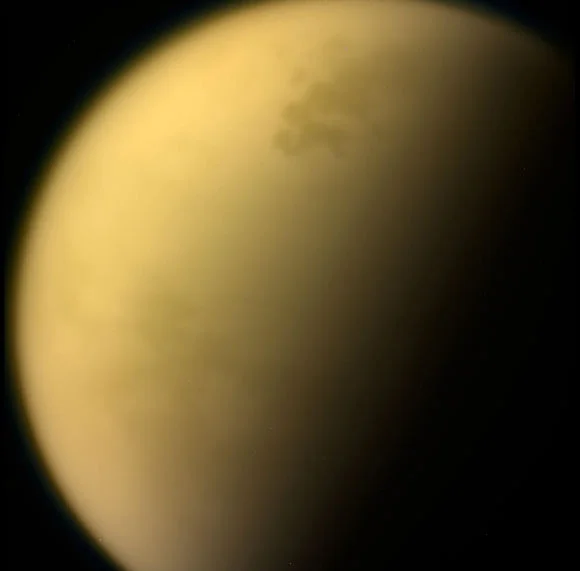
Titan’s Wobbly Atmosphere: A Gyroscopic Mystery Unveiled
Saturn's largest moon, Titan, continues to surprise scientists with its Earth-like features, including a dense atmosphere. But new research reveals a bizarre twist: Titan's atmosphere doesn't spin in sync with its surface. Instead, it wobbles like a gyroscope, tilting and shifting with the changing seasons. This discovery not only deepens the mystery surrounding Titan, but also has implications for NASA's upcoming Dragonfly mission.

The findings, published in The Planetary Science Journal, are based on 13 years of thermal infrared observations from the Cassini-Huygens mission, a joint effort by NASA, ESA, and the Italian Space Agency. Lead author Lucy Wright, from the University of Bristol, described the atmospheric tilt as "very strange," noting that it appears to be "acting like a gyroscope, stabilizing itself in space."
The research indicates that the atmosphere's temperature field isn't centered on the pole as anticipated, but shifts in sync with Titan's long seasonal cycle (each year on Titan equates to nearly 30 Earth years). “It seems that the angular momentum axis of the atmosphere is offset from that of the solid body. Over time, the rotation axis of the atmosphere is changing relative to the planet's spin-axis,” Wright explained.
Professor Nick Teanby, co-author also from Bristol, highlighted the puzzling aspect of the tilt direction remaining fixed in space, rather than being influenced by the Sun or Saturn. This lack of external influence adds another layer to the enigma, posing a "new mystery on our hands."

One of the key implications of this discovery lies in its influence on the Dragonfly mission, the drone-like rotorcraft scheduled to explore Titan in the 2030s. As Dragonfly descends through Titan's atmosphere, it will encounter winds significantly faster than the moon's surface rotation. Understanding the atmospheric wobble is crucial for accurately calculating the landing trajectory, ensuring Dragonfly's safe arrival. Dr. Conor Nixon from NASA Goddard emphasizes that the tilt directly affects how the payload will be carried through the atmosphere, making this research vital for precise landing predictions.
This research underscores the wealth of knowledge still hidden within Cassini's data archive. The fact that Titan's atmosphere behaves like a disconnected spinning top not only raises intriguing questions about Titan itself, but also offers insights into atmospheric physics more broadly, including here on Earth.
What caused Titan's atmosphere to behave in this peculiar way? Could similar atmospheric behaviors exist on other celestial bodies? Share your thoughts and theories in the comments below!